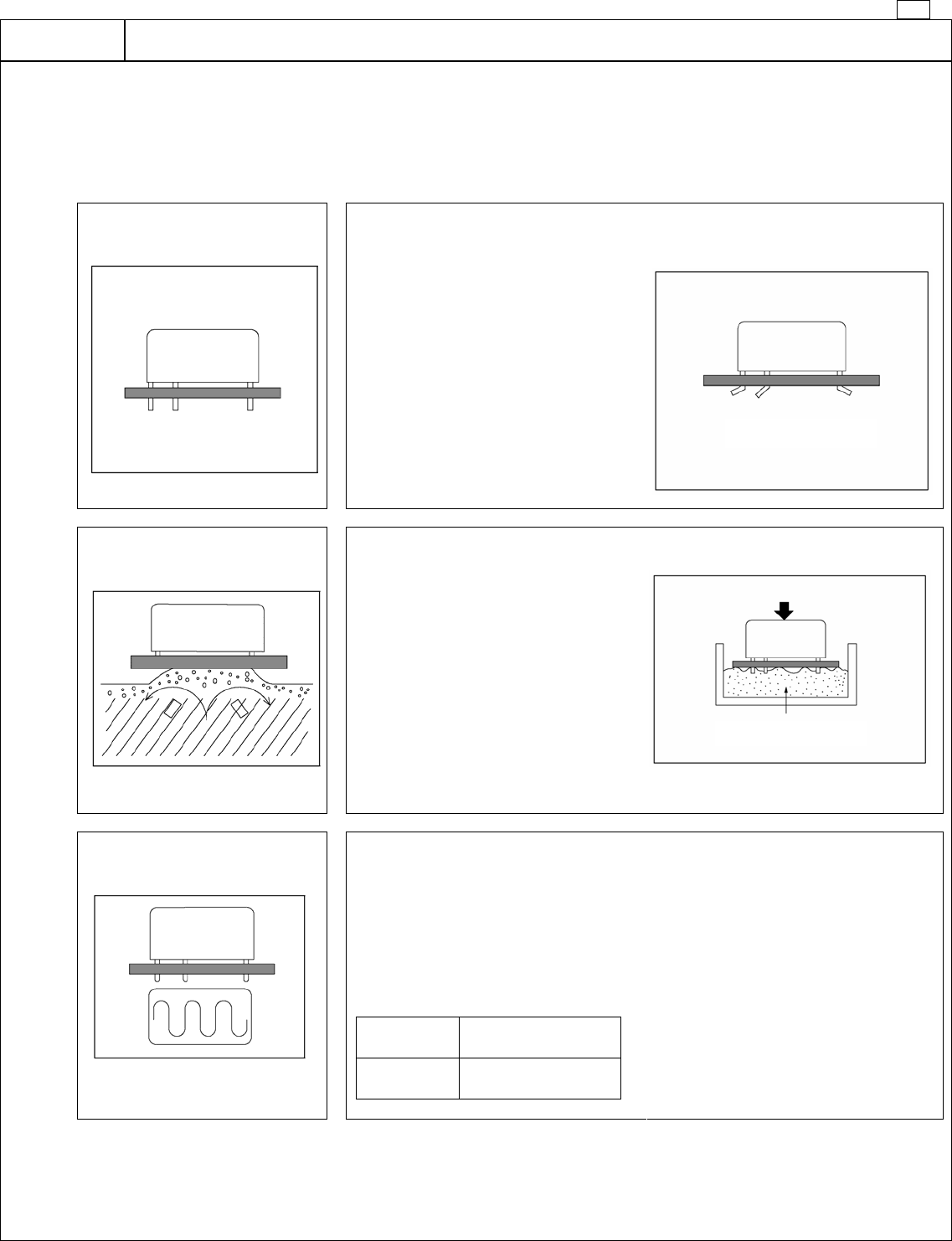
Bad example
Bad example
13
15. PCB
mounting
1. Through-hole type
In keeping with making devices compact, it is becoming more common to solder the relay to a PC board along with the
semiconductors instead of using the previous plug-in type in which relays were plugged into sockets.
With this style, loss of function may occur because of seepage into the relay of flux, which is applied to the PC board. Therefore,
the following precautions are provided for soldering a relay onto a PC board. Please refer to them during installation in order to
avoid problems.
The type of protective structure will determine suitability for automatic soldering or automatic cleaning. Therefore, please review
the parts on construction and characteristics.
1. Mounting of Relay
• Avoid bending the terminals to make
the relay self-clinching. Relay
performance cannot be guaranteed if
the terminals are bent.
• Correctly make the PC board according
to the given PC board pattern
illustration.
• Tube packaging for automatic mounting
is available depending on the type of
relay. (Be sure that the relays don't
rattle.) Interference may occur internally
if the gripping force of the tab of the
surface mounting machine is too great.
This could impair relay performance.
2. Flux Application
• Adjust the position of the PC board so
that flux does not overflow onto the top
of it. This must be observed especially
for dust-cover type relays.
• Use rosin-based non-corrosive flux.
• If the PC board is pressed down into a
flux-soaked sponge as shown on the
right, the flux can easily penetrate a
dust-cover type relay. Never use this
method. Note that if the PC board is
pressed down hard enough, flux may
even penetrate a flux-resistant type
relay.
3. Preheating
• Be sure to preheat before using
automatic soldering. For dust-cover
type relays and flux-resistant type
relays, preheating acts to prevent the
penetration of flux into the relay when
soldering. Solderability also improves.
• Preheat according to the following
conditions.
Temperature
120°C/ 248°F or less
(PCB solder surface)
Time
Within approx. 2
minute
• Note that long exposure to high
temperatures (e.g. due to a
malfunctioning unit) may affect relay
characteristics.


















